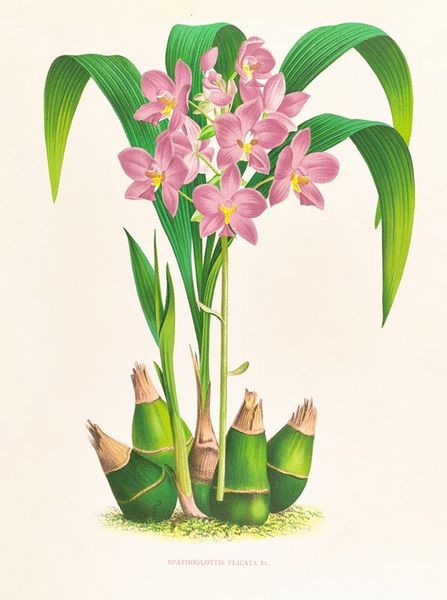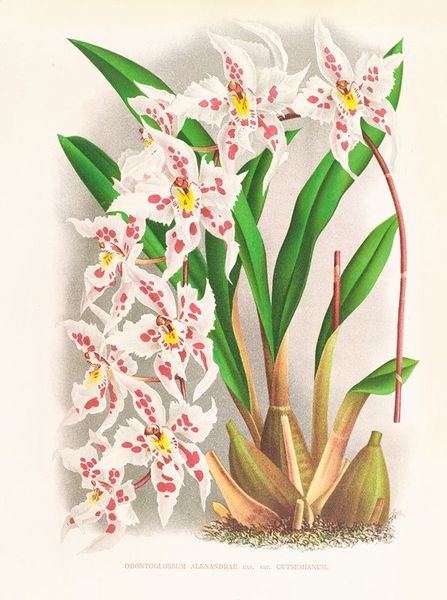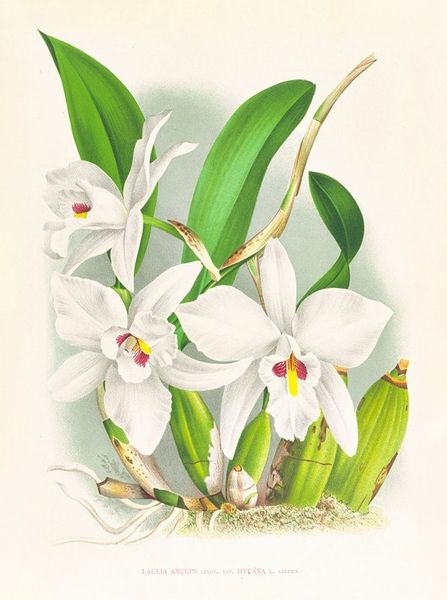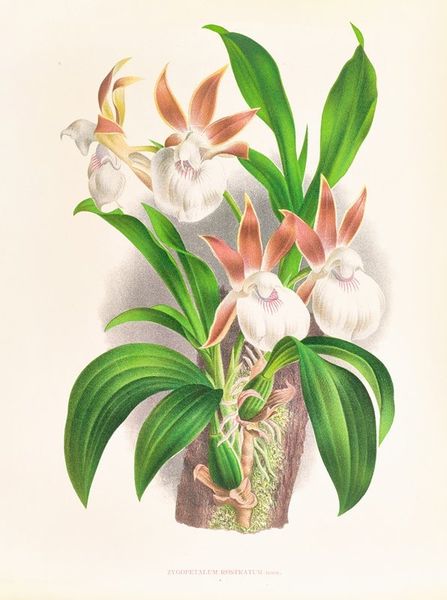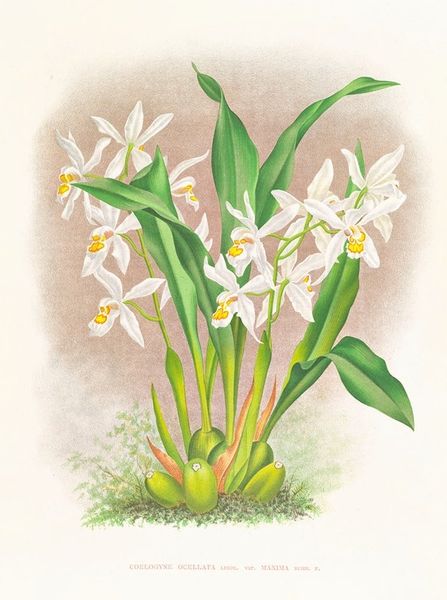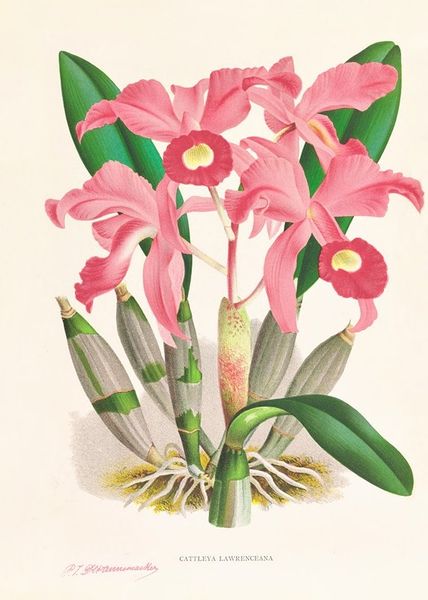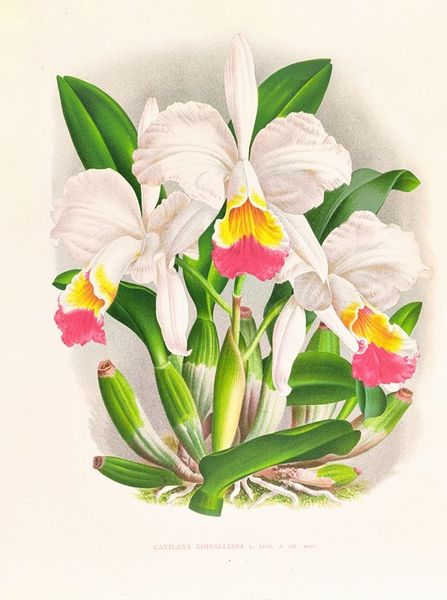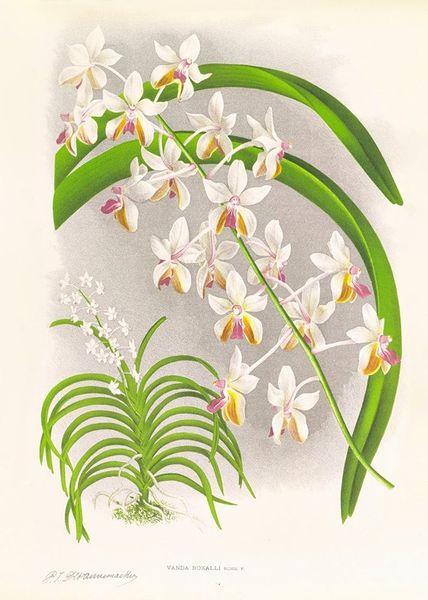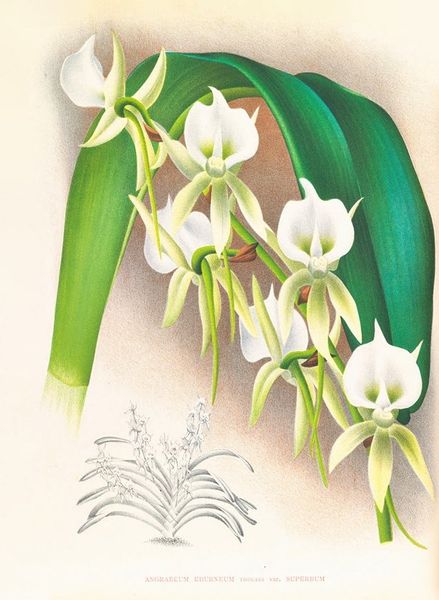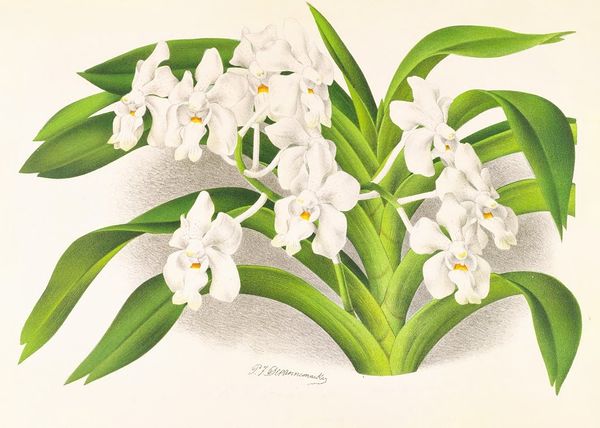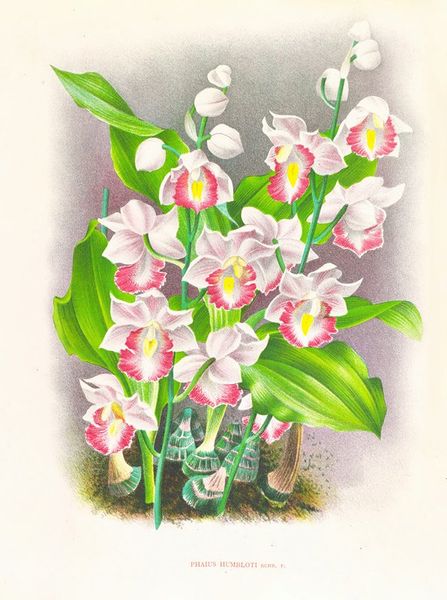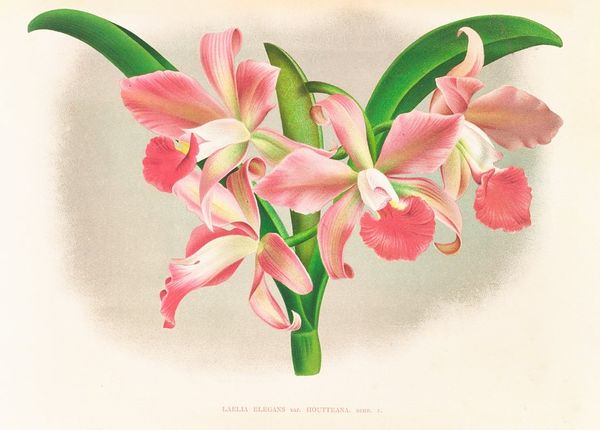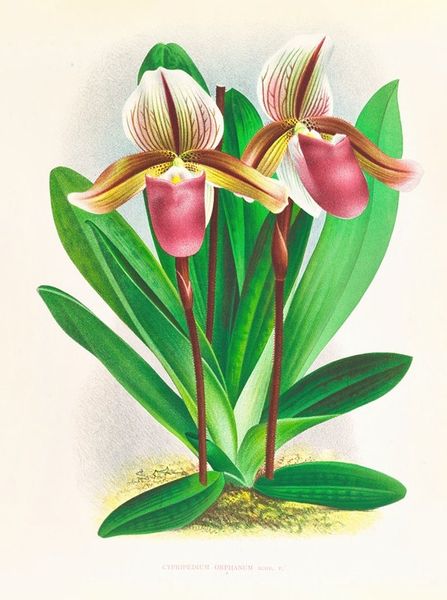
Copyright: Public Domain: Artvee
Curator: Here we have "Spathoglottis Augustorum," a watercolor and ink drawing on paper created between 1885 and 1906 by Jean Jules Linden. Editor: The pale petals immediately strike me—almost lunar, floating against the sharp green leaves. It’s serene but also feels keenly observed, scientifically rendered. Curator: Linden was indeed fascinated with botanical accuracy. These detailed floral illustrations were produced during an era of intense interest in cataloging and understanding the natural world, particularly in newly accessible tropical regions. Consider the political implications of accessing these specimens during colonial expansion. Editor: Right, the drive to document often paralleled imperial ambitions. But beyond that, look at the subtle variations in the flower forms themselves. The orchid, throughout history, carries potent symbolism relating to beauty, wealth and mystery. The Victorians definitely embraced these deeper symbolical possibilities. Curator: Indeed, it became a desirable status symbol for many people and public botanical gardens! Institutions cultivated collections that signaled power and scientific authority. Think of Kew Gardens, for example. These orchid illustrations, appearing in publications of the period, aided knowledge dispersal and impacted our conception of the natural world. Editor: And each element speaks volumes. White, often tied to purity and innocence. Green for growth and life. Even the configuration of these pale flowers feels like a deliberate composition intended to inspire, in its viewer, both curiosity and admiration. It is designed for cultural impact through symbolism. Curator: Absolutely. Linden’s artistic contributions must also be situated within broader trends towards realism, naturalism and early impressionistic treatments, marking significant shifts from idealized to more directly observed representation. This also helped to legitimize colonial ventures to new audiences. Editor: The detail in these petals – how delicately they fade, how accurately the structures of the flower are defined - really showcase this artwork's unique perspective on natural and cultural histories! Curator: It's a fascinating intersection, one that invites ongoing questions regarding the complicated dynamics surrounding nature, knowledge, and political motivations.
Comments
No comments
Be the first to comment and join the conversation on the ultimate creative platform.
